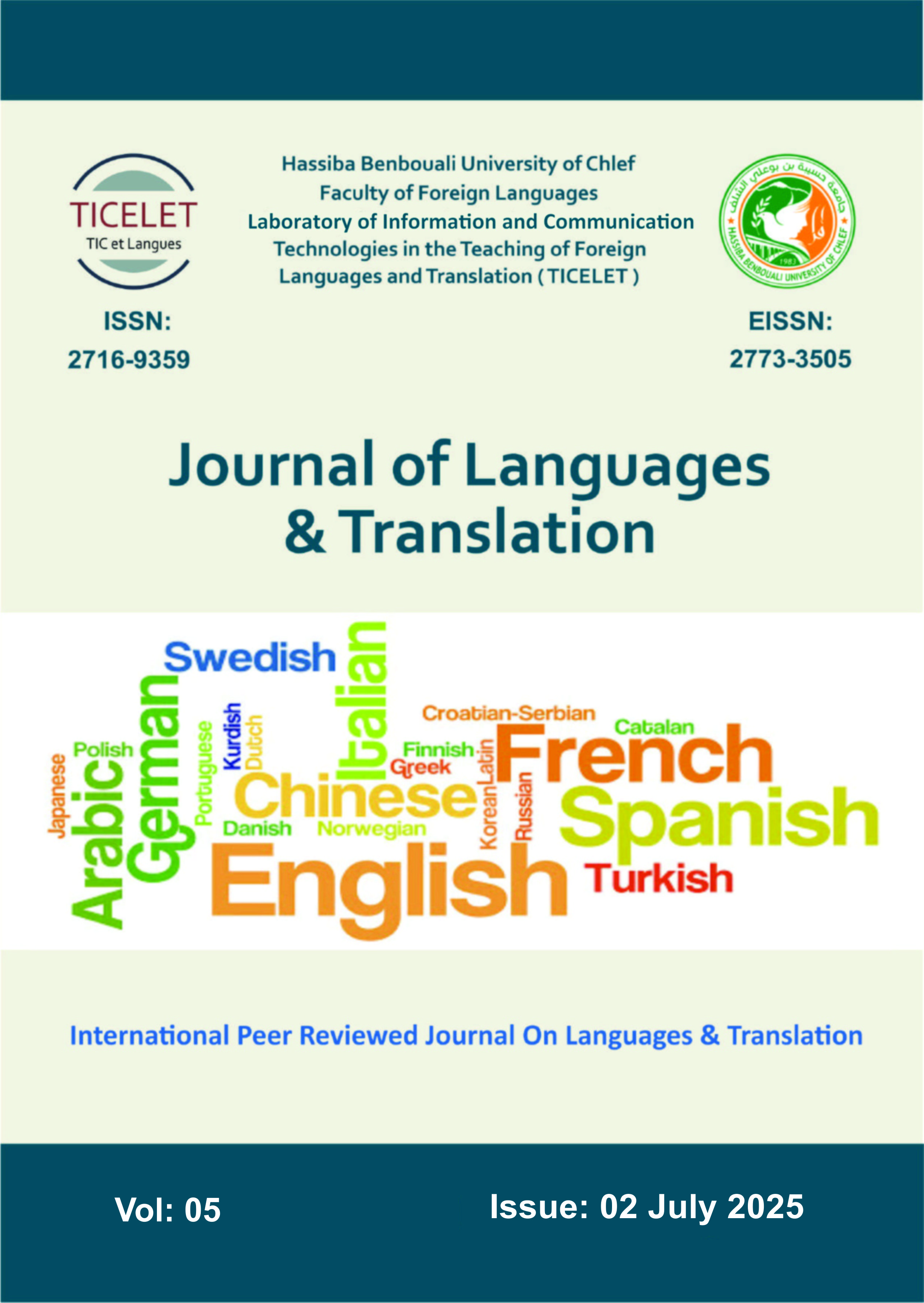Foundations of the Aesthetics of Description in the Poem «Description of Lightning and Rain» by Ubayd ibn al-Abras
DOI:
https://doi.org/10.70204/jlt.v5i2.768Keywords:
aesthetic, pre-islamic poetry, sensory image, Ubayd ibn al-Abras, nature descriptionAbstract
Pre-Islamic poetry is often viewed as a theatrical space where the harsh desert environment interacts with the poet’s creative genius, producing vivid, expressive, and aesthetically rich imagery. This interplay reaches its peak in poems like “Description of Lightning and Rain” (Waṣf al-Barq wa al-Maṭar) by ʿUbayd ibn al-Abras, which this study examines as a model of artistic and rhetorical maturity. Entitled “The Foundations of Aesthetic Description in the Poem ‘Description of Lightning and Rain’ by ʿUbayd ibn al-Abras: From Sensory Imagery to the Radiance of Poetic Imagination,” the study investigates how sensory and imaginative elements coalesce in pre-Islamic poetic description. Central questions include whether the descriptive mode is merely a realistic portrayal of nature or a projection of the poet’s inner world; whether its aesthetic force lies more in simile or metaphor; and how rhythmic structure enhances its expressive depth. The research adopts an interpretive, analytical approach to uncover the pragmatic, semantic, and emotional dimensions of poetic discourse. It highlights how ʿUbayd transforms sensory stimuli—particularly auditory and visual cues—into imaginative, emotionally charged imagery. His use of poetic devices and rhythmic patterns not only captures the brilliance of lightning and the rumble of thunder but also reflects an internalized, contemplative view of the natural world. The study concludes that ʿUbayd’s ḥāʾiyya demonstrates both artistic maturity and imaginative depth, where aesthetic expression emerges from the fusion of perceptual immediacy and poetic insight














